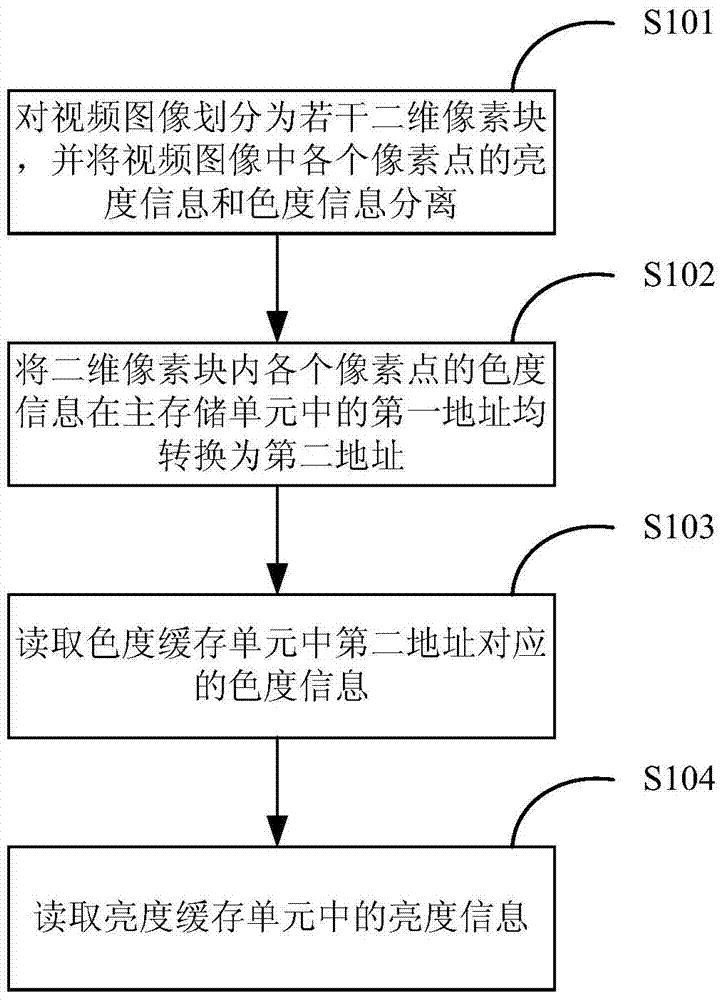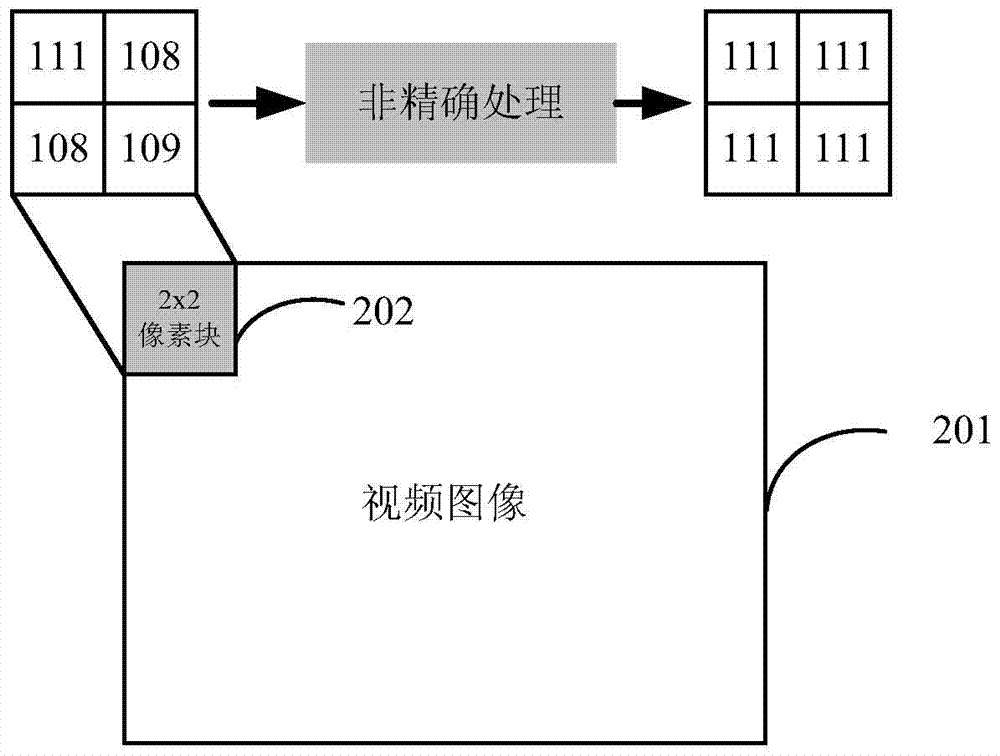A video image cache processing method and device
A video image and cache technology, applied in the direction of image communication, digital video signal modification, electrical components, etc., can solve the problems of increasing the area of the integrated circuit, increasing the hit time, and the hit time is long, so as to reduce the cache miss rate and improve the The effect of overall performance and high missing rate
- Summary
- Abstract
- Description
- Claims
- Application Information
AI Technical Summary
Problems solved by technology
Method used
Image
Examples
Embodiment 1
[0053] figure 1 It is a flow chart of the steps of the video image cache processing method in this embodiment. The following combination figure 1 Explain in detail.
[0054]Step S101 is a preprocessing step, dividing the video image into several two-dimensional pixel blocks, and separating the luminance information and chrominance information of each pixel in the video image.
[0055] Since the human eye is sensitive to the luminance in the video image but not to the chrominance part, the luminance information and chrominance information of each pixel in the video image can be separated. The chrominance information therein is processed imprecisely through subsequent processing steps.
[0056] figure 2 It is an example diagram of dividing a video image into two-dimensional pixel blocks in this embodiment. A video image 201 including a plurality of pixels is sequentially divided into a plurality of pixel blocks 202, wherein the pixel block 202 includes 4 pixels and is dist...
Embodiment 2
[0086] image 3 A schematic structural diagram of the video image cache processing apparatus 300 according to this embodiment is shown. The video image cache processing device 300 includes a preprocessing unit 301 , an address conversion unit 302 , a chroma reading unit 303 and a brightness reading unit 304 . Among them, the preprocessing unit 301 is used to divide the video image into several two-dimensional pixel blocks, and separate the luminance information and chrominance information of each pixel point in the video image; the address conversion unit 302 is used to divide each pixel in the two-dimensional pixel block The first address of the chromaticity information of the point in the main storage unit is converted into a second address; the chromaticity reading unit 303 is used to read the chromaticity information corresponding to the second address in the chromaticity buffer unit, and the two-dimensional pixel block Perform inaccurate processing as a pixel point; the ...
Embodiment 3
[0097] This embodiment describes the result of processing video images using the method of the present invention. The selected image samples are 5 QCIF and 5 CIF images, and the image format is 4:2:0 YUV color difference format. Using the method in Embodiment 1 of the present invention, wherein the size of the two-dimensional pixel block is 2×2 pixels, the test results are shown in Table 2.
[0098] Table 2 shows the PSNR (db) of the image after inaccurate processing. The average peak signal-to-noise ratio (PSNR) of the image is above 35dB, which meets the requirements of the human eye. Taking the QCIF image akiyo_qcif_ch.yuv as an example, the subjective rendering of the inaccurately processed image and the original image is given, such as Figure 5a with Figure 5b shown.
[0099] At the same time, in order to verify that the method is used in video processing, the method is selected to be applied to the H.264 system, and the imprecise processing is combined with the H.26...
PUM
 Login to View More
Login to View More Abstract
Description
Claims
Application Information
 Login to View More
Login to View More - Generate Ideas
- Intellectual Property
- Life Sciences
- Materials
- Tech Scout
- Unparalleled Data Quality
- Higher Quality Content
- 60% Fewer Hallucinations
Browse by: Latest US Patents, China's latest patents, Technical Efficacy Thesaurus, Application Domain, Technology Topic, Popular Technical Reports.
© 2025 PatSnap. All rights reserved.Legal|Privacy policy|Modern Slavery Act Transparency Statement|Sitemap|About US| Contact US: help@patsnap.com



